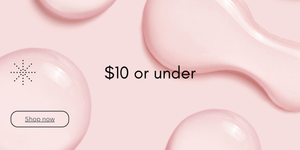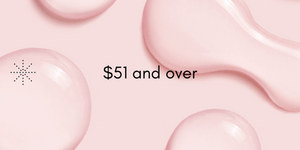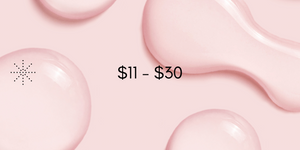Your Complete Guide to Sunscreen: Types, Benefits, and Proper Application
If you think sunscreen is optional, try telling that to your future self when you start noticing those premature wrinkles and sunspots—trust us, it’s not worth it!

Table of Contents:
- What happens when UV rays hit your skin?
- Understanding sunscreen: SPF & protection
- Choosing the right sunscreen product
- How to apply and reapply sunscreen for maximum protection
In this post, we’ll explain why sun protection is like putting the crown on your skincare routine—the final, but incredibly important step!
Beyond just giving you a tan, the sun’s UV rays can lead to sunburn, early aging, pigmentation, and, in serious cases, even skin cancers like melanoma. Effective sun protection is essential, especially when you’re using ingredients like AHAs that increase sun sensitivity. If you have lots of moles, this step becomes even more crucial—a small action today that can make a huge difference down the road.
What Happens When UV Rays Hit the Skin?
UV rays can be divided into two main types: UVA and UVB, each affecting the skin in different ways.
UVA rays have a longer wavelength and can penetrate deeper into the skin. They are responsible for the long-term effects of sun exposure, such as premature aging, wrinkles, and a loss of skin elasticity. UVA rays also contribute to tanning, as they stimulate the production of melanin in the skin.
On the other hand, UVB rays have a shorter wavelength and affect the outer layer of the skin. They are the main cause of sunburns and are more directly linked to skin damage, such as DNA mutations. Excessive UVB exposure can cause severe damage to the skin, potentially leading to mutations that disrupt normal cell function and contribute to skin cancer development.

Now that you understand how UV rays can affect your skin, you can see why sunscreen is a non-negotiable step in your routine. It’s the final layer of protection that keeps your skin safe and healthy. Skipping this step can leave your skin vulnerable, but with daily use, you're helping to preserve its youthful glow and protect it from long-term damage.
Do You Need Sunscreen Indoors?
But wait a minute! If I’m home all day, do I really need sunscreen? The answer is yes! Even when you're indoors, UVA rays can still sneak through windows and contribute to skin aging. If you're sitting near a window or spending time in well-lit spaces, you're still exposed. So, no matter where you are, daily sunscreen is a must to keep your skin looking and feeling its best!
Understanding Sunscreen Labels: UVA and UVB Protection
SPF (Sun Protection Factor) tells you how long sunscreen can protect your skin from UVB rays. For example, an SPF 30 sunscreen means it would take 30 times longer for your skin to burn compared to unprotected skin. SPF mainly targets UVB protection, but to ensure your skin is fully protected, you’ll want to look for a broad-spectrum sunscreen. This label means the product shields both UVA and UVB rays, giving you balanced protection.
But how do you know the level of UVA protection? In some regions, especially in Asian countries like Korea, sunscreens often feature a PA rating system to indicate UVA protection. PA stands for Protection Grade of UVA, and it’s marked with plus signs (+) to show the strength of protection. For example, PA+ means moderate protection, while PA++++ indicates very high protection against UVA rays.
Broad-spectrum sunscreens are great for everyday use, and depending on the time of year, you might go for SPF 30 in the cold season or SPF 50 during the hotter months to get that extra layer of defence. Whatever sunscreen you choose from AU Beauty Bazaar, you can trust that you’re getting reliable broad-spectrum UV protection, keeping your skin safe year-round.
Types of Sunscreens: Physical vs. Chemical
Sunscreens generally fall into two categories: physical (mineral) and chemical (organic) filters.
Physical sunscreens, containing filters like zinc oxide and titanium dioxide, sit on the skin’s surface, forming a protective layer. They are ideal for sensitive skin and children, though they may leave a white cast due to their thicker texture. However, the benefits of non-chemical, skin-friendly protection make them a great choice, despite the potential for this slight drawback.
Chemical sunscreens contain filters such as oxybenzone, avobenzone, and octinoxate, absorb UV rays and convert them into heat, which is then released from the skin. They may feel lighter on the skin, leave minimal residue, and are more comfortable for daily wear. However, they tend to degrade faster when exposed to UV light, so frequent reapplication (every 2-3 hours) is essential, especially during strong sunlight exposure.

Now, let's take a look at our favourite products—carefully selected to offer reliable UV protection for all skin types.

The Beauty of Joseon - Relief Sun is ideal for sensitive skin, offering soothing hydration and protection without any white cast. Infused with Rice Extract, Grain Fermenting Lysate, and Probiotics, it not only shields your skin from the sun but also nourishes and balances it. Its lightweight, gel-like texture makes it the perfect daily sun protector and makeup base, ensuring smooth, glowing skin all day long!

If your skin tends to get oily throughout the day, Beauty of Joseon - Relief Sun Aqua-fresh is the perfect solution. This lightweight, hydrating sunscreen absorbs quickly without leaving a white cast or greasy residue. Enriched with soothing Panthenol and nourishing Rice Seed Water, it’s ideal for oily to combination skin, providing long-lasting protection and a fresh, matte finish all day.

If your skin is in need of a moisture boost, ROUND LAB 1025 DOKDO SUNSCREEN is here to satisfy that thirst! Packed with Ulleungdo Deep Sea Water and Triple Hyaluronic Acid, this sunscreen hydrates while keeping your skin balanced. The ACZERO Complex, featuring Willow Bark, Bergamot, and Green Tea, works to control sebum and soothe, giving your skin the refreshment it craves.
How to Apply Sunscreen Correctly?
To get the best sun protection, use about half a teaspoon for your face and neck. Once you’ve applied it, give it around 8-15 minutes to settle in. While the sunscreen starts working right away, letting it sit for a little while helps it form a nice, even layer that won’t easily rub off when you touch your face or put on makeup.
Now, you might be thinking—what about makeup? Will it mess with the sunscreen?
If you’re applying makeup over sunscreen, especially if the foundation doesn’t contain SPF, keep in mind that it may dilute your sunscreen’s effectiveness. To ensure your protection lasts:
- Wait 8-15 minutes after applying sunscreen before starting makeup.
- Avoid heavy rubbing or excessive patting.
- Use a beauty blender or a brush to minimize disruption to your sunscreen layer.
Reapplying Sunscreen During the Day
Reapplying sunscreen throughout the day, especially after sweating or swimming, is key to keeping your skin protected. Sunscreen powders and sprays are super convenient for reapplying over makeup, but just keep in mind that their coverage might not be as reliable as cream sunscreens. If you’re out in the sun for a longer period, like at the beach or on a hike, it might be a good idea to skip the makeup and focus on getting an even layer of sunscreen instead.
If you love the idea of reapplying without a hassle, sunsticks can be a game-changer! They're super easy to carry around and apply anywhere, anytime—perfect for those moments when you need extra protection throughout the day. Just swipe and go!

Enjoy powerful SPF 50+ PA++++ protection with the TOCOBO Cotton Soft Sun Stick. Its micro-powder texture absorbs excess oil for a matte, smooth finish without any white cast. With its easy, mess-free stick applicator, it's the perfect sunscreen for quick, on-the-go touch-ups whenever you need extra protection throughout the day.

Shiseido - Anessa Perfect UV Sunscreen Skincare Milk SPF 50+ is your ultimate water-loving sun shield, perfect for outdoor sports, the beach, or swimming! With its waterproof and sweat-resistant formula, this sunscreen stands strong for up to 80 minutes in water, keeping you protected while you stay active. Thanks to Auto Booster Technology, it actually gets stronger in water and sweat.
Keep in mind: while many cosmetic products like BB creams contain SPF, it can be tricky to apply enough for full protection. The best way to go is with a standalone sunscreen, and remember, reapplication is key for lasting coverage.
Final Thoughts: Daily Sunscreen for Healthy, Youthful Skin
Using sunscreen every day is one of the simplest and most effective ways to keep your skin youthful and healthy. Regular application helps prevent visible signs of aging and more serious skin issues, supporting your skin’s health in the long run. With a variety of sunscreens available in our webshop, there’s something for every skin type and lifestyle, making it easier than ever to protect your skin all year round.










Leave a comment